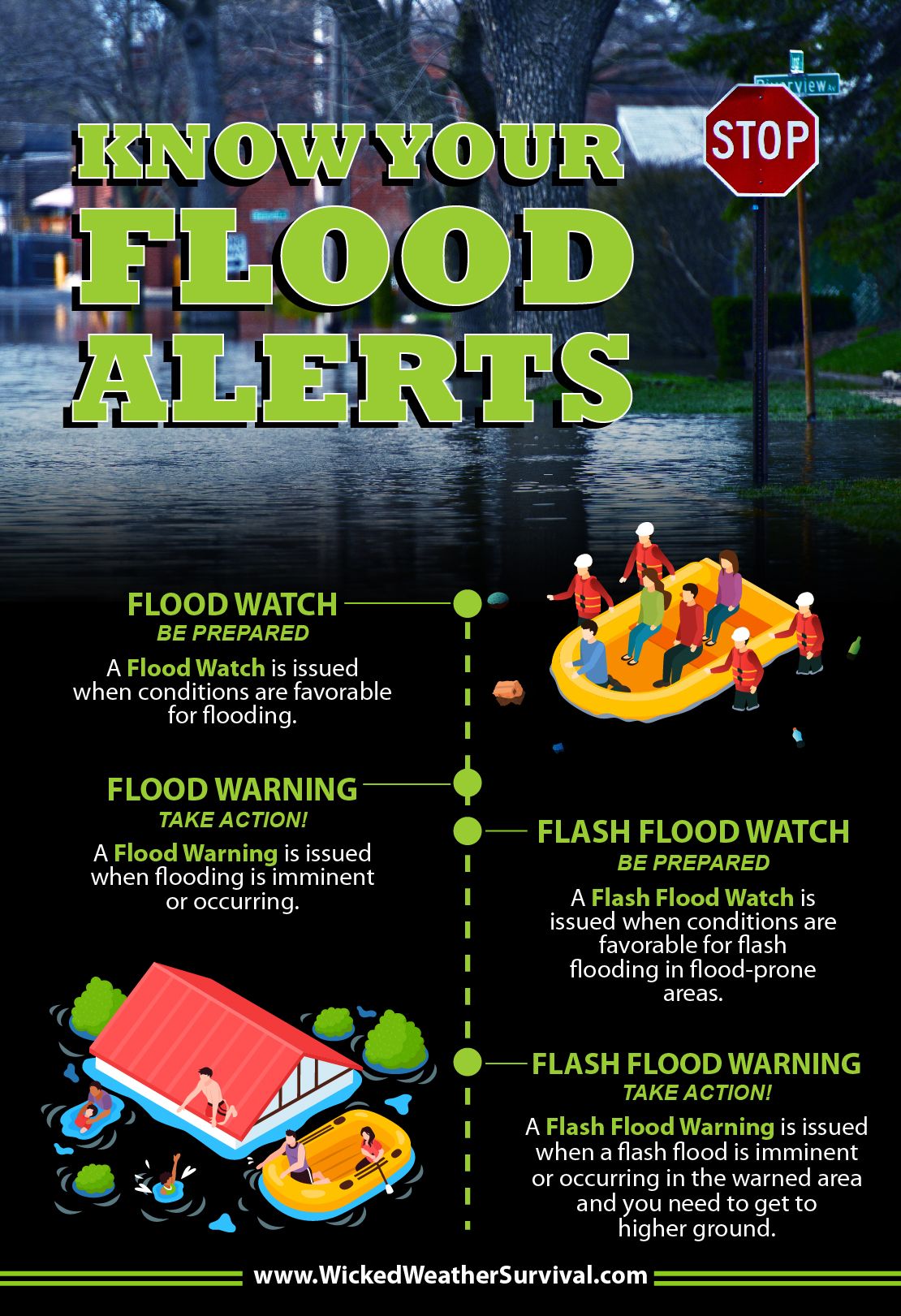Navigating Flood Alerts: Preparedness And Response Planning

Table of Contents
Understanding Flood Alerts and Warnings
Effective flood preparedness starts with understanding the different types of flood alerts and where to find them. Knowing the difference between a watch, warning, and advisory is critical in determining the appropriate response.
Different Types of Flood Alerts
- Flood Watch: A flood watch means conditions are favorable for flooding. While flooding isn't imminent, it's a good time to monitor conditions and prepare.
- Flood Warning: A flood warning indicates that flooding is occurring or is imminent. Immediate action is necessary. Evacuation may be required.
- Flood Advisory: A flood advisory signifies that minor flooding is occurring or is expected. While the situation may not be as critical as a warning, it still warrants caution and preparedness.
Sources of Flood Alerts
Staying informed about potential flood alerts is paramount. Several sources provide timely and reliable information:
- National Weather Service (NWS): The NWS is the primary source for weather-related alerts, including flood warnings and advisories. [Link to NWS website]
- Local News: Local news channels and websites often provide up-to-date weather reports and flood alerts specific to your area.
- Weather Apps: Numerous weather apps (e.g., WeatherBug, AccuWeather) deliver real-time alerts and forecasts directly to your smartphone.
- Emergency Alert System (EAS): Your television and radio may issue emergency alerts, including flood warnings, directly from the government.
Interpreting Flood Alert Information
Flood alerts usually provide crucial information such as:
- Affected Areas: Precisely identifies the locations at risk of flooding.
- Anticipated Severity: Describes the potential impact of the flood (e.g., minor, moderate, major).
- Duration: Estimates how long the flood event is expected to last.
Understanding this information allows you to take appropriate actions based on the severity and proximity of the threat.
Pre-Flood Preparedness: Building Your Resilience
Proactive flood preparedness significantly reduces the impact of a flood event. This involves creating a family emergency plan, assembling an emergency kit, and protecting your property.
Creating a Family Emergency Plan
A well-defined family emergency plan is essential for flood safety. It should include:
- Designated Meeting Points: Establish multiple meeting points in case one becomes inaccessible.
- Evacuation Routes: Plan multiple escape routes, considering potential road closures.
- Emergency Contact Information: Include contact information for family, friends, and emergency services.
- Out-of-State Contact Person: Designate a person outside the affected area to act as a central communication point.
Assembling an Emergency Kit
Your flood emergency kit should contain:
- Water: At least one gallon of water per person per day for several days.
- Food: Non-perishable food items sufficient for several days.
- Medications: A supply of essential medications.
- First-Aid Supplies: A comprehensive first-aid kit.
- Flashlight and Batteries: Essential for navigating darkness during a power outage.
- Important Documents: Copies of insurance policies, identification, and other vital documents.
Protecting Your Property
Taking steps to protect your property before a flood can significantly minimize damage:
- Flood Insurance: Consider purchasing flood insurance, even if you're not in a high-risk area.
- Elevate Valuables: Move important belongings to higher levels of your home.
- Install Flood Barriers: Sandbags or commercially available flood barriers can help protect your property.
During a Flood: Safe Actions and Evacuation
Receiving a flood warning demands immediate action.
Immediate Actions Upon Receiving a Flood Warning
- Move Valuables to Higher Ground: Relocate essential items to upper floors or outside if possible.
- Unplug Electrical Appliances: Prevent electrical shock by unplugging all appliances.
- Turn Off Utilities (If Safe): If it's safe to do so, turn off gas and electricity.
- Monitor Flood Conditions: Stay informed about the evolving situation through reliable sources.
Evacuation Procedures
If instructed to evacuate, follow official guidelines immediately. Use designated evacuation routes and utilize safe transportation. If you're driving, avoid flooded roads – even a few inches of water can cause significant damage to your vehicle.
Staying Safe During a Flood
If evacuation isn't possible, move to the highest level of your building. If necessary, seek refuge on the roof, but only as a last resort. Always be aware of rising waters and changing conditions.
Post-Flood Recovery and Safety
Returning home after a flood requires caution and a systematic approach.
Returning Home Safely
- Check for Structural Damage: Assess the integrity of your home before entering.
- Avoid Downed Power Lines: Stay far away from power lines that have fallen into water.
- Be Aware of Contaminated Water: Floodwater often carries pollutants and debris – use caution.
Cleaning and Sanitizing
Thoroughly clean and sanitize your home after floodwaters recede. Discard any items that have been submerged in floodwater. Use appropriate cleaning solutions and follow guidelines from health officials.
Seeking Assistance
Following a flood, contact relevant authorities for assistance. The Federal Emergency Management Agency (FEMA) and the American Red Cross provide crucial support and resources to flood victims.
Conclusion
Effective flood preparedness is crucial for mitigating the devastating effects of flooding. By understanding flood alerts, developing a comprehensive emergency plan, and taking proactive steps to protect your property, you can significantly improve your flood safety. Don't wait until it's too late – take control of your flood safety, stay informed about flood alerts, and develop a comprehensive flood preparedness plan today!

Featured Posts
-
 David Hockney A Bigger Picture The Significance Of Place And Perspective
May 26, 2025
David Hockney A Bigger Picture The Significance Of Place And Perspective
May 26, 2025 -
 Meta Israels 5th Annual Holocaust Remembrance Day Instagram Project Israeli Celebrities Participate
May 26, 2025
Meta Israels 5th Annual Holocaust Remembrance Day Instagram Project Israeli Celebrities Participate
May 26, 2025 -
 Uefa Arda Gueler Ve Real Madrid E Sorusturma Acti Detaylar
May 26, 2025
Uefa Arda Gueler Ve Real Madrid E Sorusturma Acti Detaylar
May 26, 2025 -
 Live Streaming Moto Gp Argentina 2025 Jadwal And Link Nonton Balapan Dini Hari
May 26, 2025
Live Streaming Moto Gp Argentina 2025 Jadwal And Link Nonton Balapan Dini Hari
May 26, 2025 -
 Jenson And The Fw 22 Extended Collection Everything You Need To Know
May 26, 2025
Jenson And The Fw 22 Extended Collection Everything You Need To Know
May 26, 2025
